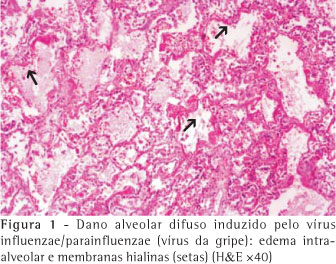OBJECTIVE: To determine the impact that open lung biopsy findings have on decisions regarding changes in the treatment strategies employed for critically ill patients presenting diffuse pulmonary infiltrates and suffering from refractory acute respiratory failure, as well as on their clinical improvement. METHODS: This study involved 12 mechanically ventilated patients with acute respiratory failure who were subjected to open lung biopsy (by thoracotomy) after not presenting a clinical response to standard treatment. RESULTS: The single most common cause of the acute respiratory failure was viral infection, which was identified in 5 patients (40%). The pre-operative evaluation of the cause of respiratory failure was modified in 11 patients (91.6%), and a specific diagnosis was made in 100% of the cases. Regardless of changes in treatment regimen, the mortality rate was 50%. Six patients (50%) survived to be discharged from the hospital. All of the discharged patients survived for at least one year after the open lung biopsy, for an overall one-year survival rate of 50% among the 12 patients studied. For the patients who died in the hospital, the time of survival after open lung biopsy was 14 + 10.8 days. CONCLUSION: We conclude that open lung biopsy is a useful tool in the management of acute respiratory failure when there is no clinical improvement after standard treatment, since it can lead to a specific diagnosis that requires distinct treatment, which probably lowers the mortality rate among such patients.
Respiratory distress syndrome; adult; Lung; Biposy; Acute respiratory syndrome





